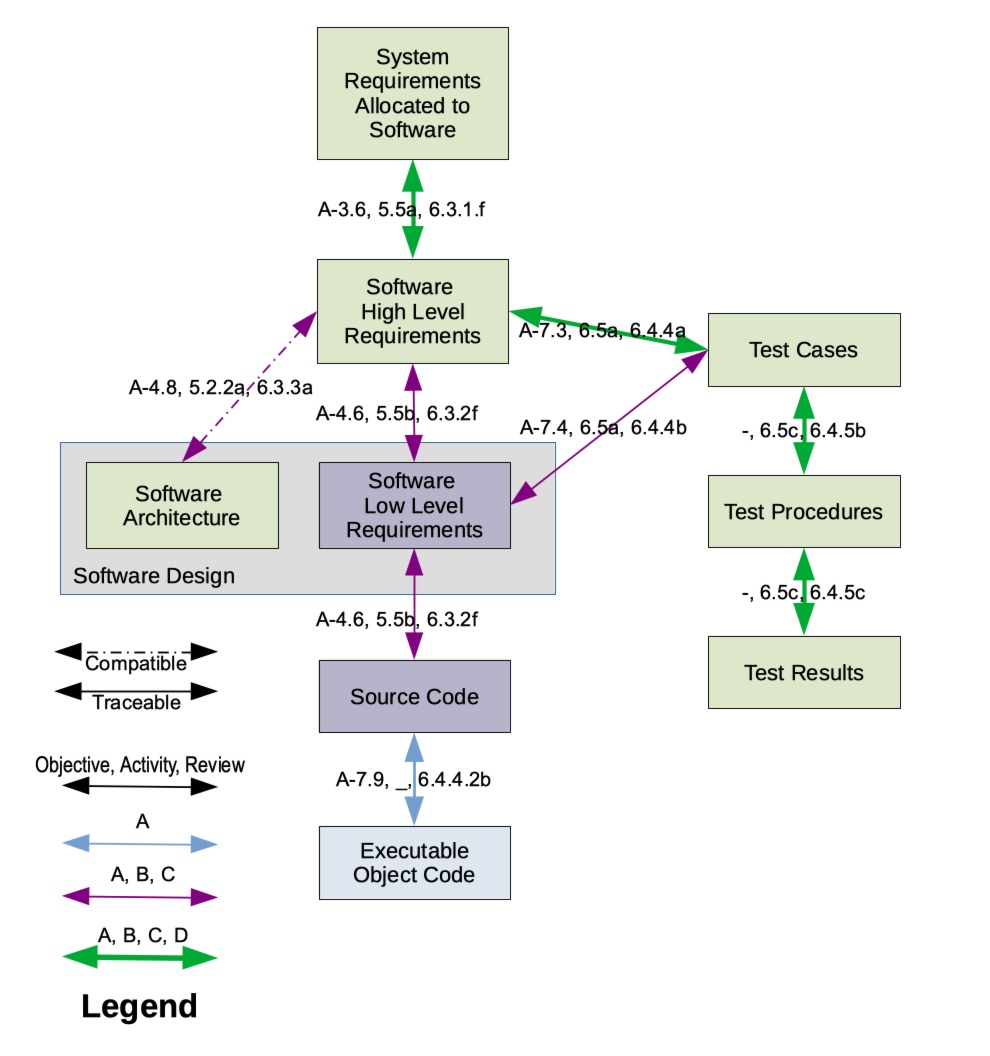|
Time-triggered System
Time-triggered architecture (abbreviated as TTA), also known as a time-triggered system, is a computer system that executes one or more sets of tasks according to a pre-determined and set task schedule.Pont, M.J. (2001) "Patterns for Time-Triggered Embedded Systems", Addison-Wesley / ACM Press. . Implementation of a TT system will typically involve use of a single interrupt that is linked to the periodic overflow of a timer. This interrupt may drive a task scheduler (a restricted form of real-time operating system). The scheduler willin turnrelease the system tasks at predetermined points in time. History and development Because they have highly deterministic timing behavior, TT systems have been used for many years to develop safety-critical aerospace and related systems.Ward, N. J. (1991) "The static analysis of a safety-critical avionics control system", in Corbyn, D.E. and Bray, N. P. (Eds.) "Air Transport Safety: Proceedings of the Safety and Reliability Society Spring Con ... [...More Info...] [...Related Items...] OR: [Wikipedia] [Google] [Baidu] |
Real-time Operating System
A real-time operating system (RTOS) is an operating system (OS) for real-time applications that processes data and events that have critically defined time constraints. An RTOS is distinct from a time-sharing operating system, such as Unix, which manages the sharing of system resources with a scheduler, data buffers, or fixed task prioritization in a multitasking or multiprogramming environment. Processing time requirements need to be fully understood and bound rather than just kept as a minimum. All processing must occur within the defined constraints. Real-time operating systems are event-driven and preemptive, meaning the OS is capable of monitoring the relevant priority of competing tasks, and make changes to the task priority. Event-driven systems switch between tasks based on their priorities, while time-sharing systems switch the task based on clock interrupts. Characteristics A key characteristic of an RTOS is the level of its consistency concerning the amount of time ... [...More Info...] [...Related Items...] OR: [Wikipedia] [Google] [Baidu] |
Software Architecture
Software architecture is the fundamental structure of a software system and the discipline of creating such structures and systems. Each structure comprises software elements, relations among them, and properties of both elements and relations. The ''architecture'' of a software system is a metaphor, analogous to the architecture of a building. It functions as a blueprint for the system and the developing project, which project management can later use to extrapolate the tasks necessary to be executed by the teams and people involved. Software architecture is about making fundamental structural choices that are costly to change once implemented. Software architecture choices include specific structural options from possibilities in the design of the software. For example, the systems that controlled the Space Shuttle launch vehicle had the requirement of being very fast and very reliable. Therefore, an appropriate real-time computing language would need to be chosen. Additiona ... [...More Info...] [...Related Items...] OR: [Wikipedia] [Google] [Baidu] |
IEC Standards
This is an incomplete list of standards published by the International Electrotechnical Commission (IEC). The numbers of older IEC standards were converted in 1997 by adding 60000; for example IEC 27 became IEC 60027. IEC standards often have multiple sub-part documents; only the main title for the standard is listed here. * IEC 60027 Letter symbols to be used in electrical technology * IEC 60028 International standard of resistance for copper * IEC 60034 Rotating electrical machines * IEC 60038 IEC Standard Voltages * IEC 60041 Field acceptance tests to determine the hydraulic performance of hydraulic turbines, storage pumps and pump-turbines * IEC 60044 Instrument transformers * IEC 60045 Steam turbines * IEC 60050 International Electrotechnical Vocabulary * IEC 60051 Direct acting indicating analogue electrical measuring instruments and their accessories * IEC 60052 Voltage measurement by means of standard air gaps * IEC 60055 Paper-insulated metal-sheathed cables for rat ... [...More Info...] [...Related Items...] OR: [Wikipedia] [Google] [Baidu] |
Electrical Standards
Electricity is the set of physical phenomena associated with the presence and motion of matter that has a property of electric charge. Electricity is related to magnetism, both being part of the phenomenon of electromagnetism, as described by Maxwell's equations. Various common phenomena are related to electricity, including lightning, static electricity, electric heating, electric discharges and many others. The presence of an electric charge, which can be either positive or negative, produces an electric field. The movement of electric charges is an electric current and produces a magnetic field. When a charge is placed in a location with a non-zero electric field, a force will act on it. The magnitude of this force is given by Coulomb's law. If the charge moves, the electric field would be doing work on the electric charge. Thus we can speak of electric potential at a certain point in space, which is equal to the work done by an external agent in carrying a unit of positi ... [...More Info...] [...Related Items...] OR: [Wikipedia] [Google] [Baidu] |
International Standards
international standard is a technical standard developed by one or more international standards organizations. International standards are available for consideration and use worldwide. The most prominent such organization is the International Organization for Standardization (ISO). Other prominent international standards organizations including the International Telecommunication Union (ITU) and the International Electrotechnical Commission (IEC). Together, these three organizations have formed the World Standards Cooperation alliance. Purpose International standards may be used either by direct application or by a process of modifying an international standard to suit local conditions. Adopting international standards results in creating national standards that are equivalent, or substantially the same as international standards in technical content, but may have (i) editorial differences as to appearance, use of symbols and measurement units, substitution of a point for a comma ... [...More Info...] [...Related Items...] OR: [Wikipedia] [Google] [Baidu] |
Safety Engineering
Safety engineering is an engineering discipline which assures that engineered systems provide acceptable levels of safety. It is strongly related to industrial engineering/systems engineering, and the subset system safety engineering. Safety engineering assures that a life-critical system behaves as needed, even when components fail. Analysis techniques Analysis techniques can be split into two categories: Qualitative research, qualitative and Quantitative research, quantitative methods. Both approaches share the goal of finding causal dependencies between a hazard on system level and failures of individual components. Qualitative approaches focus on the question "What must go wrong, such that a system hazard may occur?", while quantitative methods aim at providing estimations about probabilities, rates and/or severity of consequences. The complexity of the technical systems such as Improvements of Design and Materials, Planned Inspections, Fool-proof design, and Backup Redundan ... [...More Info...] [...Related Items...] OR: [Wikipedia] [Google] [Baidu] |
Safety
Safety is the state of being "safe", the condition of being protected from harm or other danger. Safety can also refer to the control of recognized hazards in order to achieve an acceptable level of risk. Meanings There are two slightly different meanings of ''safety''. For example, ''home safety'' may indicate a building's ability to protect against external harm events (such as weather, home invasion, etc.), or may indicate that its internal installations (such as appliances, stairs, etc.) are safe (not dangerous or harmful) for its inhabitants. Discussions of safety often include mention of related terms. Security is such a term. With time the definitions between these two have often become interchanged, equated, and frequently appear juxtaposed in the same sentence. Readers unfortunately are left to conclude whether they comprise a redundancy. This confuses the uniqueness that should be reserved for each by itself. When seen as unique, as we intend here, each term will ... [...More Info...] [...Related Items...] OR: [Wikipedia] [Google] [Baidu] |
Life-critical System
A safety-critical system (SCS) or life-critical system is a system whose failure or malfunction may result in one (or more) of the following outcomes: * death or serious injury to people * loss or severe damage to equipment/property * environmental harm A safety-related system (or sometimes safety-involved system) comprises everything (hardware, software, and human aspects) needed to perform one or more safety functions, in which failure would cause a significant increase in the safety risk for the people or environment involved. Safety-related systems are those that do not have full responsibility for controlling hazards such as loss of life, severe injury or severe environmental damage. The malfunction of a safety-involved system would only be that hazardous in conjunction with the failure of other systems or human error. Some safety organizations provide guidance on safety-related systems, for example the Health and Safety Executive (HSE) in the United Kingdom. Risks of thi ... [...More Info...] [...Related Items...] OR: [Wikipedia] [Google] [Baidu] |
DO-178C
DO-178C, Software Considerations in Airborne Systems and Equipment Certification is the primary document by which the certification authorities such as FAA, EASA and Transport Canada approve all commercial software-based aerospace systems. The document is published by RTCA, Incorporated, in a joint effort with EUROCAE, and replaces DO-178B. The new document is called DO-178C/ED-12C and was completed in November 2011 and approved by the RTCA in December 2011. It became available for sale and use in January 2012. Except for FAR 33/ JAR E, the Federal Aviation Regulations do not directly reference software airworthiness. On 19 Jul 2013, the FAA approved AC 20-115C, designating DO-178C a recognized "acceptable means, but not the only means, for showing compliance with the applicable FAR airworthiness regulations for the software aspects of airborne systems and equipment certification." Background Since the release of DO-178B, there had been strong calls by DERs (FAA Designa ... [...More Info...] [...Related Items...] OR: [Wikipedia] [Google] [Baidu] |
Event-driven Programming
In computer programming, event-driven programming is a programming paradigm in which the flow of the program is determined by events such as user actions (mouse clicks, key presses), sensor outputs, or message passing from other programs or threads. Event-driven programming is the dominant paradigm used in graphical user interfaces and other applications (e.g., JavaScript web applications) that are centered on performing certain actions in response to user input. This is also true of programming for device drivers (e.g., P in USB device driver stacks). In an event-driven application, there is generally a main loop that listens for events and then triggers a callback function when one of those events is detected. In embedded systems, the same may be achieved using hardware interrupts instead of a constantly running main loop. Event-driven programs can be written in any programming language, although the task is easier in languages that provide high-level abstractions, such ... [...More Info...] [...Related Items...] OR: [Wikipedia] [Google] [Baidu] |





